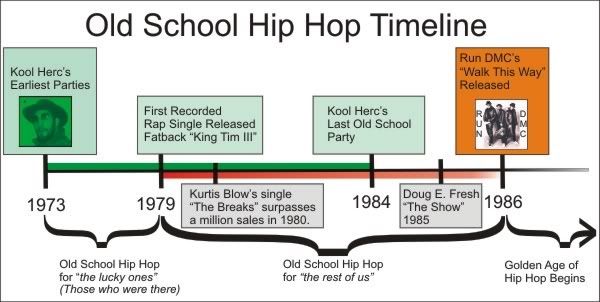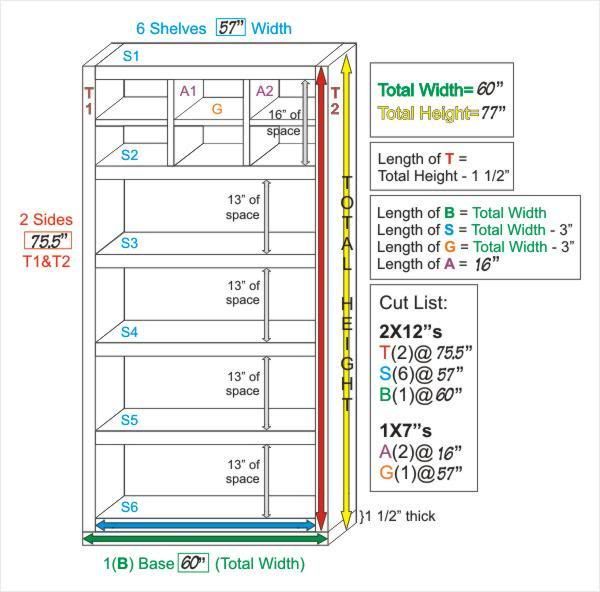
Related to Elements: Old School, DJ, MC, Golden AgeOld School Hip Hop is gone; dead and buried. Rest in Peace! Hip Hop scholars know that, part-timers know that, your mom knows that. Yet public perception of when Old School Hip Hop began and when it ended seems to be divided into two distinct schools of thought. For some it all boils down to their own personal experience, their age, what they were listening to back in High School. In other words, they take the egocentric stance that if they were bumping it in their ride on the way to the prom, it's Old School Hip Hop in their world. Then there are the other guys, those pesky sticklers of reality, who think that Old School Hip Hop was an specific Hip Hop era, the era that started it all, and it
ended in 1986.
Q: "Wait, Why 1986?" "Why not 1984 or 1988? You saying Eminem ain't Old School!?"
It all started with element one;
the DJ, specifically one DJ; Kool Herc. If Hip Hop was Christianity, Kool Herc would be Christ. And just like Christianity, only Herc and his apostles (the B-Boys and B-Girls and early MCs) witnessed Hip Hop's birth first hand. Prior to 1979, relatively speaking, this was a small group of lucky individuals who witnessed Hip Hop. Small pockets of trueschoolers consisting of aspiring Hip Hop DJs, MCs, graph writers, and their fans popped up in the early to late seventies in other urban areas, but it was unarguably Kool Herc who owned Hip Hop in the seventies, he
was Hip Hop almost exclusively.
(Help Kool Herc get well soon!)That music, the artwork, and the street dance of the earliest Old School Hip Hop all contributed to a Hip Hop culture explosion that went global by 1979. Hip Hop literally went viral that year because for the first time ever, anyone with a record player in their home could witness Hip Hop with their own ears. '79 was the same year
Fatback "King Tim III" (
the first recorded Hip Hop vinyl record) dropped, and soon after the first rap hit single
"Rappers Delight" by the
Sugar Hill Gang blew up the airwaves. Finally, Hip Hop was accessible to the masses outside the Bronx.
1979 was the first year of Old School Hip Hop* for
"the rest of us". (*Unless you were one of the
"lucky ones" who witnessed Herc's now famous block parties first hand.) If you were one of the original B-Boys who saw it all go down in the beginning, Old School Hip Hop started back in your hood back in the early seventies, but for the remaining Hip Hop masses, it started with that one 12" single, or that other one, either way in 1979.
A: From 1979 through 1986, the recordings of Hip Hop music evolved fairly gradually. As with all music, there were many distinct sounding, noteworthy singles, and many of those records became widely popular despite the plethora of non Hip Hop artists jumping on the Hip Hop band wagon. Nonbelievers compared this Hip Hop music explosion to disco, something that everyone wanted to do until it became saturated nonsense; a self-imploding parody of itself that would die in one or two years. By 1985 the writing was on the wall about the inevitability of Hip Hop's drastic reinvention.
Sugar Hill Records went bankrupt that year, and Beat Boxing pioneer
Doug E Fresh dropped the gold record hit
"The Show" proving that sometimes you only need a mic to make a good beat. B-Boyism started to go into a lull as kids started saying things like, "Breakin' is out". Graffiti also seemed to being falling out of popularity. Meanwhile, early innovative MCs, DJs, and producers ignored the naysayers as they continued to push the boundaries of the music form. The Old School Hip Hop sound was gradually dying as new techniques and new concepts in rhyme and rhythm emerged.
In 1986, the Golden Age of Hip Hop was just around the corner. Just as Old School Hip Hop exploded into the scene in 1979, it blew up again in 1986, particularly after the Old School pioneers
Run DMC dropped the seminal
"Walk This Way" video on MTV. This unheard of marriage of Rock N Roll and Hip Hop changed the music game drastically almost overnight. Ironically, the same naysayers that predicted an early end to Hip Hop were suddenly jamming out to
Aerosmith and Run DMC, injecting that this one special song was a one-off exception, adding that Hip Hop would still die soon regardless. But 1986 was also the year the
Beastie Boys released their first album
"License to Ill", which was yet another sign that Hip Hop stereotypes were breaking down, rules were changing, the sound was changing. Suddenly it seemed more acceptable for white kids across the world to listen to urban music invented by (and to this day, still dominated by) black musicians. This drastic change marked the end of the Old School Hip Hop days.
Other Hip Hop
game-changers that were dropped in 1986:
- Eric B and Rakim - "Eric B. is President" (another unarguably relevant and distinct Hip Hop single.)
- MC Shan's "The Bridge" (One of the longest running Hip Hop beefs ever sparked.)
- Ultramagnetic MCs "Ego Trippin" (Golden Age pioneers' debut single.)
- Schoolly D "PSK-What does it mean" (Independent MC drops what some call the first gangster rap single.)
- Run DMC "My Adidas" (Rappers freely endorse a product out of love for the sneakers giving birth to the first name brand element.)
- Just Ice "Cold Gettin Dumb" (Just Ice's signature rhyme flow over Mantronix's monster beats helps usher in the Golden Age of Hip Hop.)
In a nutshell, Old School Hip Hop began as an explosion. It started with a big bang in 1979. Yes, the fuse was lit by Kool Herc, prior to that when he built the bomb with his own two hands, but it blew up in 1979. Old School Hip Hop ended with an even bigger explosion when 1986 brought definitive Hip Hop game-changers, Run DMC and the Beastie Boys.

For those obsessed with reminiscing about the glorious Old School Hip Hop days, you can blame those two crews for personally killing Old School Hip Hop. Granted, after 1986 certain rappers may have held on to that distinct 'fun-loving' Old School sound from years prior, but soon they'd learn that Hip Hop was essentially a young-man's game filled with new fans ready for the New School of thought. Ultimately these same fan's helped usher in the Golden Age of Hip Hop by seeking out and dropping their hard-earned money on these fresh New School records.
The death of the Old School era is not something that should be mourned, but instead remembered and understood. It's important to respect the architects of Hip Hop, and educate and, of course, reminisce on it. But it's not mythical. Don't expect it to come back ever again. Hip Hop has always been about survival of the fittest artists, and about the youngest and freshest contributors to the culture. It's always going to evolve in and out of new directions or new eras. To the modern day naysayers; Hip Hop's built-in ability to adapt with the times is exactly why
Hip Hop will never die. If you are one of those, you and your kind have been getting it wrong for the past 31 years, and as long as fresh creative minds keep getting born, it will continue to evolve long into the future. The Old School may be dead but the New School will live forever.






 (Police and Firefighters are exempt from the cuts... For now.)
(Police and Firefighters are exempt from the cuts... For now.) Related to Elements: DJ, Crate Digging, 12" Single
Related to Elements: DJ, Crate Digging, 12" Single

 Then with your pencil, mark circles where you want to drill the pilot holes. Space them out a bit, I’d recommend 4-5 screws per shelf side. Start drilling pilot holes. Keep the drill bit plum.
Then with your pencil, mark circles where you want to drill the pilot holes. Space them out a bit, I’d recommend 4-5 screws per shelf side. Start drilling pilot holes. Keep the drill bit plum. 

 Starting with the vertical supports, (A1 and A2 on the printable plans) use your square and pencil to divide the wood into 4 identically sized quarters. Since the wood is 1” thick you’ll need to cut out an inch wide slot for the intersection of the horizontal run connection it makes. Repeat these same steps with the horizontal shelves. (G on the printable plans) Make sure your measurements are precise on these cuts or it won’t fit properly.
Starting with the vertical supports, (A1 and A2 on the printable plans) use your square and pencil to divide the wood into 4 identically sized quarters. Since the wood is 1” thick you’ll need to cut out an inch wide slot for the intersection of the horizontal run connection it makes. Repeat these same steps with the horizontal shelves. (G on the printable plans) Make sure your measurements are precise on these cuts or it won’t fit properly. 


